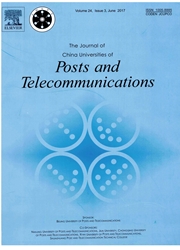

 中文摘要:
中文摘要:
Inventory inaccuracy has great influence on the supply chain performance and it has attracted much attention of large numbers of researchers. This paper mainly studies the robust multi-period inventory inaccuracy problem by attaching radio frequency identification(RFID) technology. In particular, the typical retailer-supplier flexible commitment(RSFC) problem is considered to cope with the uncertain environment. After modeling, robust optimization(RO) and the affinely adjustable robust counterpart(AARC) methodology are applied to solve the model. Finally, this paper uses a numerical example for the analysis of how RFID technology can be exploited in supply chain, and the effect of demand uncertainty on the systems. The results highlight the importance of inventory availability related rates and variable uncertainty in determining the profitability of RFID adoption, which can provide managerial guidelines to supply chain firms.
 英文摘要:
英文摘要:
Inventory inaccuracy has great influence on the supply chain performance and it has attracted much attention of large numbers of researchers. This paper mainly studies the robust multi-period inventory inaccuracy problem by attaching radio frequency identification(RFID) technology. In particular, the typical retailer-supplier flexible commitment(RSFC) problem is considered to cope with the uncertain environment. After modeling, robust optimization(RO) and the affinely adjustable robust counterpart(AARC) methodology are applied to solve the model. Finally, this paper uses a numerical example for the analysis of how RFID technology can be exploited in supply chain, and the effect of demand uncertainty on the systems. The results highlight the importance of inventory availability related rates and variable uncertainty in determining the profitability of RFID adoption, which can provide managerial guidelines to supply chain firms.
 同期刊论文项目
同期刊论文项目
 同项目期刊论文
同项目期刊论文
 期刊信息
期刊信息
